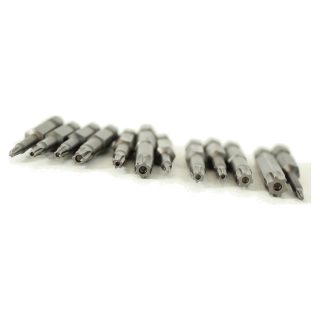Shark NV501 Lower Hose Repair
A damaged lower hose can significantly impact the performance of your Shark NV500 vacuum, leading to reduced suction and ineffective cleaning. Fortunately, replacing the lower hose is a straightforward repair that can restore your vacuum’s efficiency and extend its lifespan. This step-by-step guide will walk you through the process, ensuring a smooth and successful replacement. With the right tools and careful execution, you can keep your Shark NV500 running like new and avoid unnecessary replacements. This repair is applicable to all Shark NV500 series vacuum cleaners.
What parts do you need?
We sell high-quality replacement parts to ensure long-lasting and effective repairs! You can also check the schematic page for this vacuum cleaner.
How do I know when to...
Replace a Shark NV500 series lower hose?
Low Suction
A clogged or damaged lower hose can significantly reduce suction power, making it difficult for your Shark NV650 to pick up debris effectively. If you notice weak suction despite cleaning the filters and checking for blockages elsewhere, the lower hose may need to be replaced.
Hose Damage or Cracks
Visible cracks, holes, or tears in the lower hose can lead to air leaks, reducing suction and overall vacuum performance. If your Shark vacuum is struggling to pick up dirt, check the lower hose for any signs of physical damage.
Loss of Suction When Reclining
If your vacuum works fine when upright but loses suction when tilted back, a faulty lower hose could be the culprit. This hose flexes when the vacuum reclines, and wear over time can lead to partial or complete loss of suction.
Whistling Sounds
A damaged or partially clogged lower hose can create high-pitched whistling noises while the vacuum is running. If you hear an unusual sound coming from your Shark NV650, inspect the hose for cracks, holes, or blockages that could be restricting airflow.
Let's get down to business...
Step-by-Step Repair Guide
Step 1: Preparation
- Ensure the Shark vacuum is turned off and unplugged from the power source before attempting any repairs. This is crucial for your safety during the replacement process.
Step 2: Accessing the Lower Hose
- Locate the lower hose on your Shark vacuum. Depending on the model, it may be located on the bottom or rear of the vacuum. Once identified, use a screwdriver to remove any screws securing the lower hose in place. Most Shark vacuum cleaners use Torx bits (star shaped bits) or Security bits (star shaped bits with a locking pin). You can find those here.
Step 3: Detaching the Old Lower Hose
- Carefully detach the old lower hose from the vacuum. This may require some twisting and pulling, so be gentle to avoid causing damage to other components. Inspect the hose for any signs of damage or clogs, as this is an opportune time to address these issues.
Step 4: Installing the Replacement Hose
Take the replacement lower hose and carefully attach it to the vacuum in the same manner the old hose was connected. Ensure that it is securely in place, and if applicable, reattach any hose attachments. You will also have to glue the new lower hose into the fitting and let it dry. The glue used for this can be found here.
Step 5: Securing the New Hose
- Use the screwdriver to reinsert and tighten the screws that secure the lower hose in place. This step is crucial for the stability and proper functioning of the vacuum.
Step 6: Checking for Leaks
- Once the replacement is complete, inspect the vacuum for any potential leaks or loose connections. Turn on the vacuum and test it to ensure that the suction is consistent and that there are no unusual sounds.
Step 7: Final Steps
- Wipe down the vacuum with a clean cloth or towel to remove any dust or debris that may have accumulated during the replacement process. Store the old lower hose or dispose of it responsibly.
You also might need...
Other Items for This Repair
While completing this repair, you should check these other important items on your vacuum cleaner to ensure the best possible performance and longevity!
Final Thoughts
Replacing the lower hose on your Shark NV500 vacuum is a straightforward repair that can greatly improve its performance and longevity. By carefully following these steps, you can restore proper suction and keep your vacuum running efficiently. While Shark vacuums can be challenging to repair, taking the time to fix them helps reduce waste and keep them out of landfills. With proper maintenance and timely repairs, your Shark NV500 can continue to provide reliable cleaning for years to come.
Need More Stuff?
We offer comprehensive part diagrams and repair tutorials to help you keep your vacuum running at its best. VacuumsRus is your one-stop-shop for anything vacuum cleaner related!
Schematics and Parts Diagrams
You can find the schematics for each model this repair is applicable to here:








